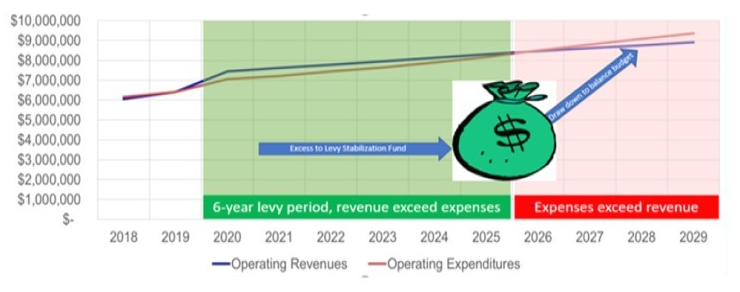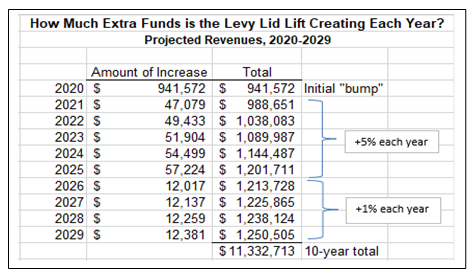2019 Property Tax Levy Lid Lift

The promises that were made to the voters, if they passed the measure, are the foundation this budget was built on.
Why did we go to the ballot? The City was at a financial crossroads. Rising costs were making it difficult for the City to provide the level of services our community has come to expect. Until 2019, the City had been able to balance the budget through aggressive cost-savings measures, identifying additional revenue sources and dipping into reserves. But in looking long-term, the City determined it could no longer find efficiencies without impacting service delivery.
The 1% rule: While property values continue to rise, the City’s tax revenues don’t rise in tandem. This is because the City’s tax revenues are not based on a percentage of Medina property value; instead, the City is authorized to collect a predetermined amount of property tax each year, and each homeowner pays a proportional share of that predetermined amount. Since 2001, local governments (like Medina) are not allowed to raise their portion of the property tax levy beyond one percent (1%) a year without a vote of the public. For context: In 2019, the City’s total 2019 property tax income was set by state law at $2.8 million in total, and a 1% increase would only yield an additional $28,000 for the City in 2020, not nearly enough to cover the rising cost of services. (Fire services alone increased by nearly double that amount in 2019.)
Asking the voters to decide: In the fall of 2019, the question of how to maintain Medina went to voters. Because the levy lid lift was approved, the City has funds to continue current service levels without significant cuts.
99% of all Medina’s General Fund & Street Operations spending is for services that are state-mandated or essential support functions to the mandated services. However, the state doesn’t dictate the level of services to be provided. For example, a city must provide law enforcement, but the state doesn’t dictate staffing levels, how often patrols are scheduled, or whether lifeguards are required for public beaches. After nearly 20 years of budget trimming, Medina was facing the need to cut into service levels that would be noticeable in every area, including public safety. In 2018, City Council and staff started a 2-year process of long-term financial planning, exploring options and public engagement surrounding a levy lid lift measure. These promises were born from those conversations and must be kept:
Maintain the same LEVEL of services as before the levy lid lift. Remember, these were already trimmed service levels. This dictates a service level, status-quo budget. So, no additions or reductions from the promises made in 2019.
Restore the City’s measures of financial health:
- Start each new year with the full General Fund required balance to cover first quarter expenses. This is something the State Auditor looks for, as well as creditors. It allows us to continue to pay the bills while waiting for our major source of funding (property taxes) that only get paid to the City in portions every 6 months.
- Engaged Finance Committee.
- Continual long-term financial planning, always looking ahead 10 years.
- Contingency Fund rebuilt.
- *Develop community friendly financial statements.
Make the “bump” from the 6-year levy last at least 10-years.
Levy year 1 (2020) filled the gap and allowed services to continue without reduction. Years 2-6 (2021-25) will have budgeted transfers to a Levy Stabilization Fund in amounts that will build a minimum operating reserve of $2M to draw on for at least another 4 years. 2023’s budget reflects a $500K transfer into this fund. See illustration below.

SPECIFICS ABOUT THE LEVY
The levy’s structure was designed to have an initial increase of no more than $0.20 per $1000 assessed value (example $2M AV home = additional $400/year). In 2020 this gave the City an additional 12% of revenue towards General Fund and Street Operations, $941,572. For the next five years (2021-2025) the City will be allowed to increase this amount by 5%, see projected table below. In 2026 the previous year’s levy total will roll into the regular property taxes, which is limited to subsequent annual increases of no more than 1% (unless another levy lid lift is approved by voters).


